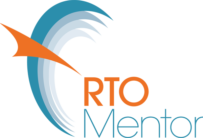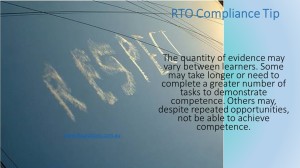The revised standards do look different; however they are essentially very much the same as the current standards being used across Australia (AQTF or NVR standards). Now is the time to review what you have happening within your RTO and make sure you are ready to meet the new compliance. By starting at the bigger picture document, which is your Training and Assessment strategy you will naturally drill down into specifics for your RTO and your clients. Review your learning and assessment strategies. A good strategy helps you to plan and document key aspects of your program such as what it includes, how the training and assessment is organised and who will be involved. It will also ensure that your course reflects the industry needs, your student is knowledgeable of the units included in the qualification, the duration of the training, and your trainer knows what is expected and where to find the resources. Strategies are often forgotten once they have been written, and passed an audit. These are actually very important documents that need to be kept up-to-date.
Review your strategies
Review your strategies to ensure you have a current strategy for each qualification or course you deliver. If you deliver in different locations or are using different mediums when you present the program, you should consider writing a strategy for each situation. It is likely you will need different resources, learning plans or assessment plans, and often including it in one document becomes cumbersome. It is important to have these spelled out. Getting someone else to review and assist you with your RTO strategies is a valuable exercise. Industry consultation is imperative in your strategy development, and can occur in different forms. Your strategies need to support the information gathered during consultation. Whilst managing RTOs, I have found that face to face meetings are the most successful and can be beneficial in prompting very helpful and often surprising feedback. The timing of your consultation can be strategic, or regular. It can be when you are planning to put a new qualification / course on scope or when you are improving your existing course or qualification.
With the VET reform, employers have a say in your training, and it is very important for you to engage with them now, more than ever before. Meeting with your industry is a beneficial way of developing training that actually meets their needs. You never know, you might even find a new client who raves about you to others! Remember to document your consultant in a way that works for you. You will need to show this to your auditor, so keep a system that is simple and effective. During my many RTO visits I have seen many different systems including having an online folder full of industry consultation emails, minutes, notes, or keeping a separate consultation diary, formal minutes, or hand written reports. If you are delivering qualifications, check your packaging rules then have someone else check them again. Make sure the electives can be used, and you have enough.
Resources
Remember you need to have all resources in place for all training products on your scope of registration. Nominate your trainers/ assessors against each unit. Be able to show their vocational competence and experience; either on the document or referring to additional documents. Learning tools and resources are key to the learning experience and sometimes to your assessment. These need to be described in your strategy. Describe the resources, tools and/or equipment you will use in your training and assessment. Sometimes you will need to support your statements with other checklists that are used during the course. Educational and support services are the ways you can support your students in their learning journey. This will vary from RTO to RTO however you need to spell out what you offer in the strategy and then have the resources to provide this support at easy reach. Support services could look like LLN programs, study support, access to trainers, learning materials, libraries, or on-line support. Support is often neglected, and RTOs usually have it written in the student handbook, or the procedures, they just haven’t said anything about it in the strategy. Make sure it is detailed, and perhaps a reference to where further information can be found.


Hello Merinda,
Great article with a wealth of information for creating a QA checklist.
Thank you very much
My absolute pleasure. Merinda